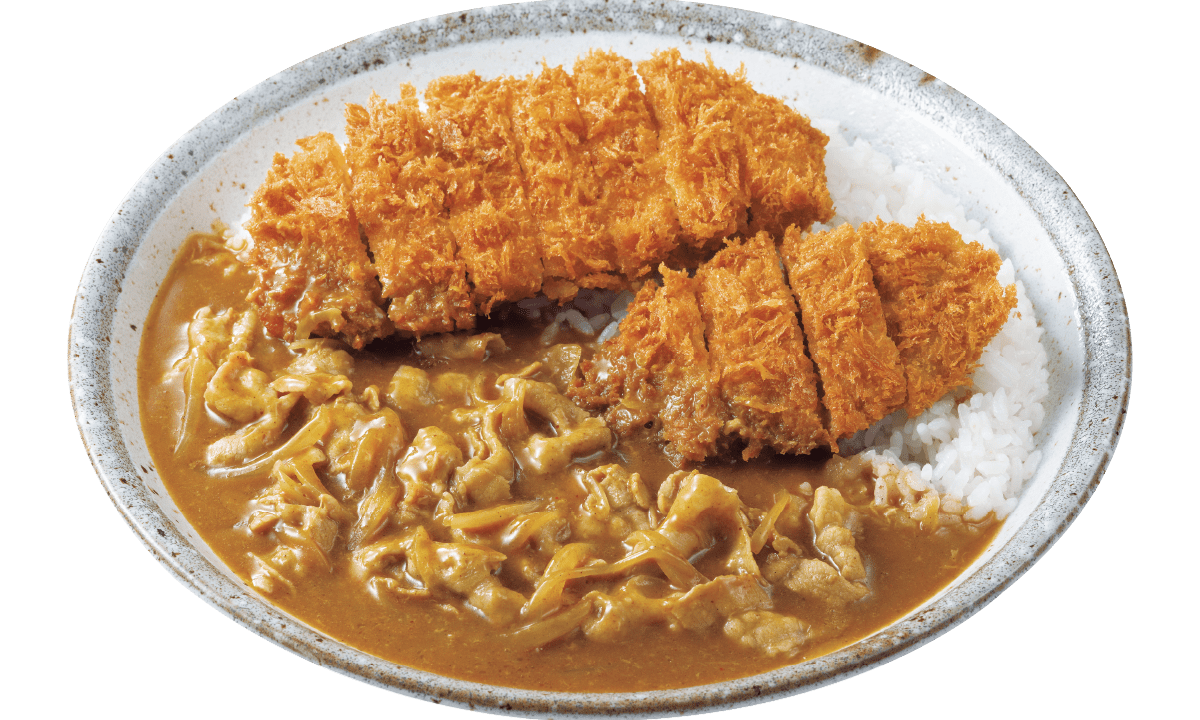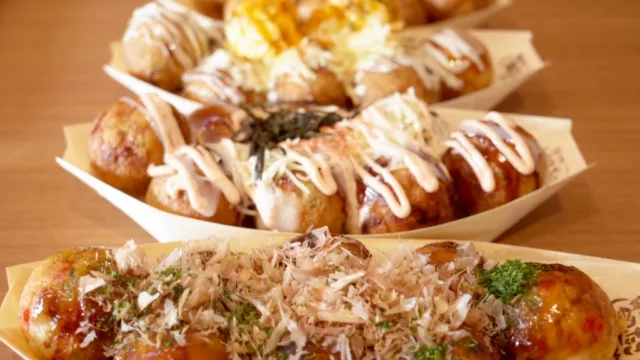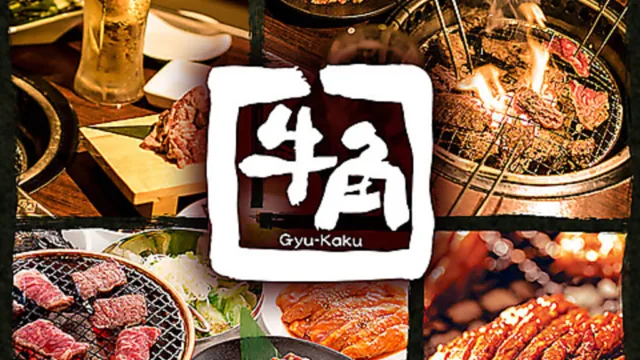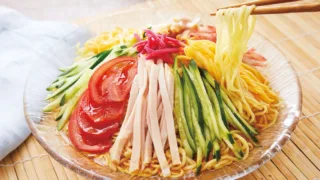Japanese Curry

Japanese curry, or “kare” (カレー), is a popular dish in Japan that is distinct from other types of curry found around the world. It is characterized by its thick, mildly sweet and savory sauce, often with a hint of umami. Here are some key features of Japanese curry:
Historical Background
- Introduction: Japanese curry was introduced to Japan by the British during the Meiji era (1868-1912). The British Navy, influenced by Indian curry during the colonial period, brought curry powder to Japan.
- Adaptation: Over time, the Japanese adapted the curry to their taste preferences, making it milder, sweeter, and thicker compared to its Indian counterpart.
Ingredients and Preparation
- Roux: The foundation of Japanese curry is a roux made from butter or oil, flour, and curry powder. Pre-made curry roux blocks are also commonly used, simplifying the cooking process.
- Meat and Vegetables: Common meats include beef, pork, and chicken. The standard vegetables are onions, carrots, and potatoes. Sometimes, other ingredients like mushrooms, eggplants, and green beans are added.
- Seasoning: Besides curry powder, the seasoning may include soy sauce, Worcestershire sauce, ketchup, honey, grated apples, and garlic for added depth of flavor.
Varieties of Japanese Curry
- Katsu Curry: A popular variation where a breaded and deep-fried pork or chicken cutlet (tonkatsu) is served on top of the curry and rice.
- Seafood Curry: Includes seafood like shrimp, squid, and sometimes scallops, adding a different texture and flavor to the dish.
- Vegetable Curry: A vegetarian version with a variety of seasonal vegetables.
- Curry Udon: Thick udon noodles served in a curry-flavored soup, combining the richness of curry with the heartiness of udon.
- Curry Bread (Kare Pan): A deep-fried bread filled with curry, popular as a snack or quick meal.
Cultural Significance
- Home Cooking: Japanese curry is a staple in Japanese households. It’s a common comfort food, and families often have their unique recipes.
- School Lunch: Curry rice is a frequent item in Japanese school lunches (kyushoku), beloved by children for its mild flavor.
- Restaurants: There are specialized curry restaurants across Japan, such as Coco Ichibanya, which offer a wide variety of curry dishes with customizable spice levels and toppings.
- Curry Festivals: Japan hosts curry festivals and events where different styles and regional variations are showcased.
Nutritional Aspects
- Balance: Japanese curry typically contains a balance of protein (meat or seafood), carbohydrates (rice), and vegetables, making it a relatively well-rounded meal.
- Caloric Content: The richness of the roux and the use of ingredients like butter and meat can make Japanese curry quite calorie-dense. Lighter versions with more vegetables are also popular.
Japanese curry, with its comforting, rich, and flavorful profile, continues to be a beloved dish in Japan and has gained popularity worldwide due to its unique and adaptable characteristics.

I would like to introduce a curry chain restaurant that everyone in Japan knows. It specializes in Japanese curry, not Indian curry. Be sure to try it when you come to Japan.
CoCo Ichibanya カレーハウスCoCo壱番屋
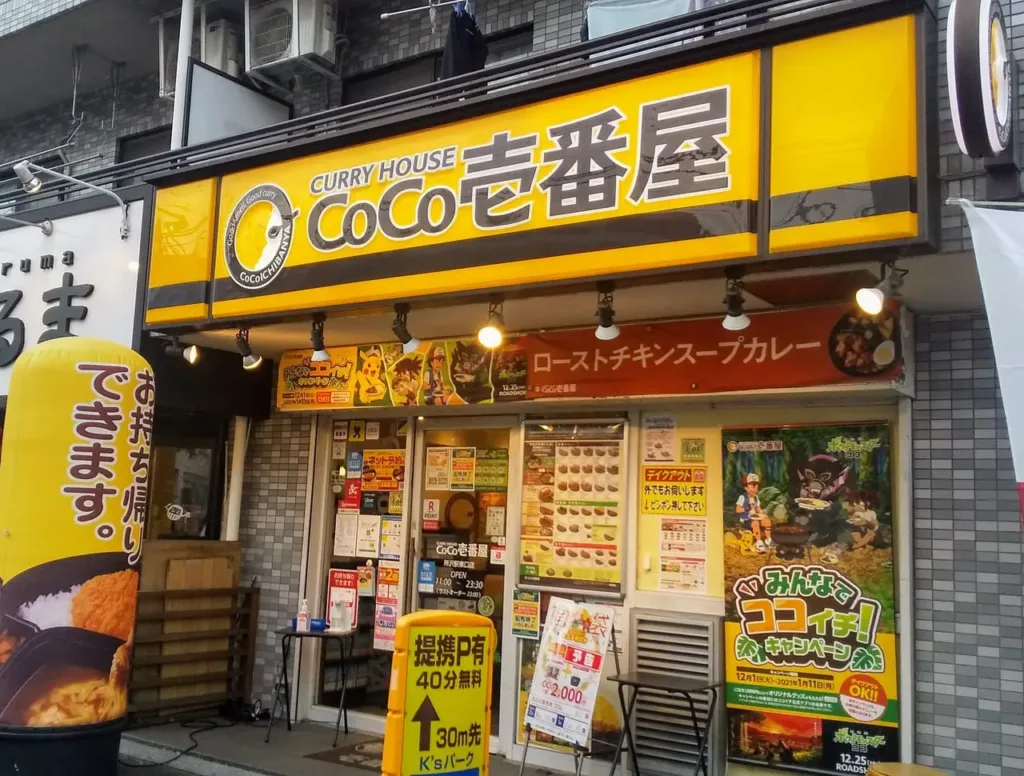
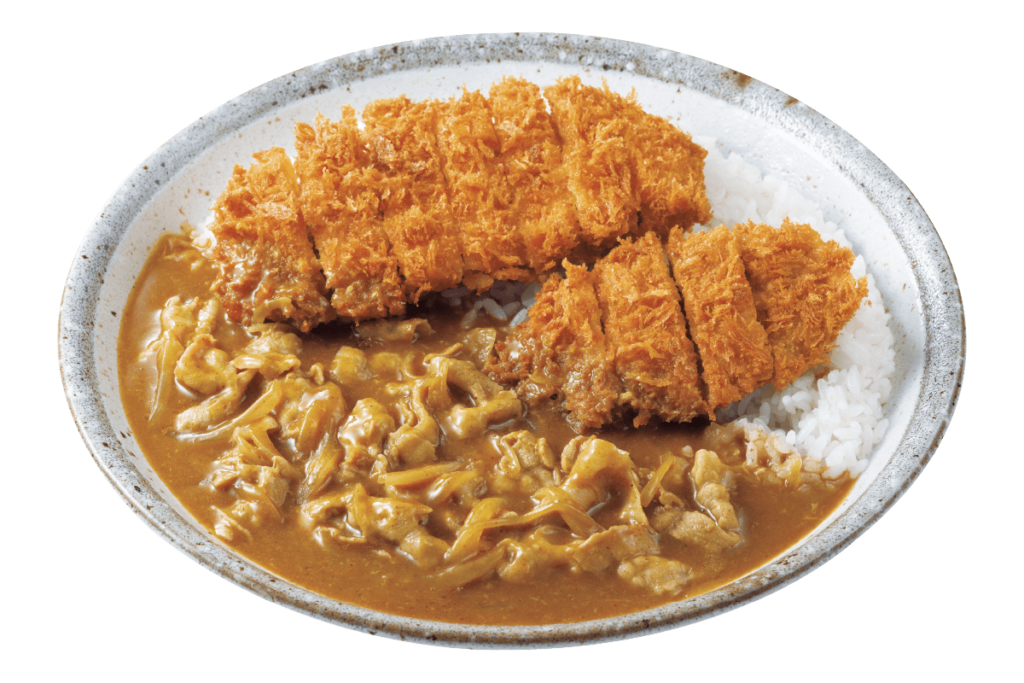
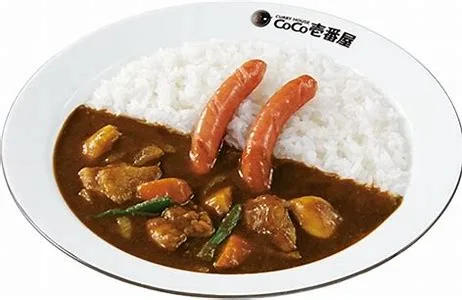
History and Background
- Founding: CoCo Ichibanya was founded by Tokuji Muromachi and his wife Naomi in 1978 in Nishi-Kasugai, Aichi Prefecture. The chain quickly grew in popularity due to its unique concept and delicious offerings.
- Expansion: The success of the first restaurant led to rapid expansion throughout Japan. Today, CoCo Ichibanya has over 1,200 locations in Japan and numerous international branches.
Menu Details
- Curry Base: The core of CoCo Ichi’s menu is its curry sauce, which is thick, flavorful, and slightly sweet. The base sauce can be customized in terms of spiciness, with levels ranging from mild (Level 1) to extremely hot (Level 10+).
- Rice Options: Customers can choose the amount of rice served with their curry, typically ranging from 200 grams to 600 grams, allowing for portion control based on appetite.
- Toppings: The variety of toppings is one of CoCo Ichi’s highlights. Popular options include:
- Breaded and fried pork cutlet (katsu)
- Chicken cutlet
- Shrimp
- Sausages
- Vegetables (potatoes, carrots, spinach, eggplant)
- Cheese
- Natto (fermented soybeans)
- Boiled eggs
- Specialty Curries: Besides the standard curry, CoCo Ichi offers specialty curries such as seafood curry, beef curry, and vegetable curry. They also have regional specials that may vary from location to location.
Customization
- Spice Level: As mentioned, customers can choose their preferred spice level. The scale is quite broad, accommodating those who prefer mild flavors to those who enjoy intensely spicy food.
- Rice Quantity: Customers can select the amount of rice, which helps in managing portion sizes and dietary preferences.
- Toppings and Add-Ons: The extensive list of toppings allows diners to create a curry dish that suits their personal tastes perfectly.
Dining Experience
- Casual Dining: CoCo Ichibanya restaurants typically have a casual, welcoming atmosphere. They cater to a wide range of customers, including families, students, and office workers.
- Efficient Service: The chain is known for its efficient and friendly service. Orders are taken quickly, and food is generally served promptly, making it a convenient option for a quick meal.
- Cleanliness and Ambience: CoCo Ichi places a strong emphasis on maintaining a clean and comfortable dining environment.
International Expansion
- Global Presence: CoCo Ichibanya has expanded internationally, bringing Japanese curry to a global audience. It has branches in the United States, United Kingdom, China, Taiwan, South Korea, Thailand, the Philippines, Indonesia, and several other countries.
- Localization: In its international branches, CoCo Ichi often tailors its menu to local tastes while still maintaining the core elements of its signature curry dishes. This may include offering local toppings or slightly adjusting spice levels.
Popularity and Cultural Impact
- Fan Base: CoCo Ichibanya has a dedicated fan base in Japan and around the world. Its consistency in quality and the customizable nature of its dishes have made it a beloved brand.
- Collaborations: The chain occasionally collaborates with other brands and participates in events and promotions, which keeps it in the public eye and adds to its appeal.
Nutritional Information
- Transparency: CoCo Ichibanya provides detailed nutritional information for its menu items, helping customers make informed choices. This includes calorie counts and information on allergens.
- Healthier Options: For health-conscious diners, CoCo Ichi offers options like brown rice and a range of vegetable-based curries.
Overall, CoCo Ichibanya’s combination of customizable curry dishes, efficient service, and international presence has solidified its reputation as a go-to spot for Japanese curry lovers.

You can adjust the spiciness, and you can eat curry with up to 20 times the spiciness. It’s insanely spicy, but if you’re a challenger, definitely give it a try.
Official HP (English)
CURRY HOUSE CoCo ICHIBANYA, Japanese-style Curry Specialty Shop

Here’s an introduction to a curry restaurant with an impressive gorilla logo. It also has locations in Tokyo, Osaka, Kyoto, and other cities.
GOGO Curry ゴーゴーカレー
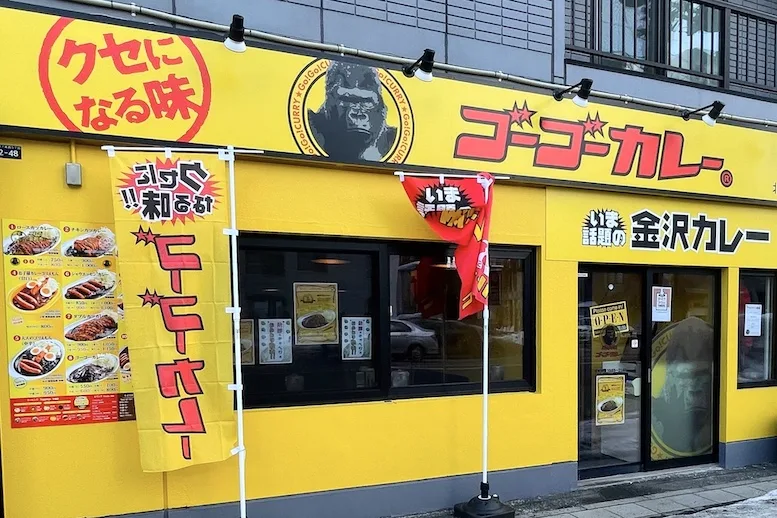
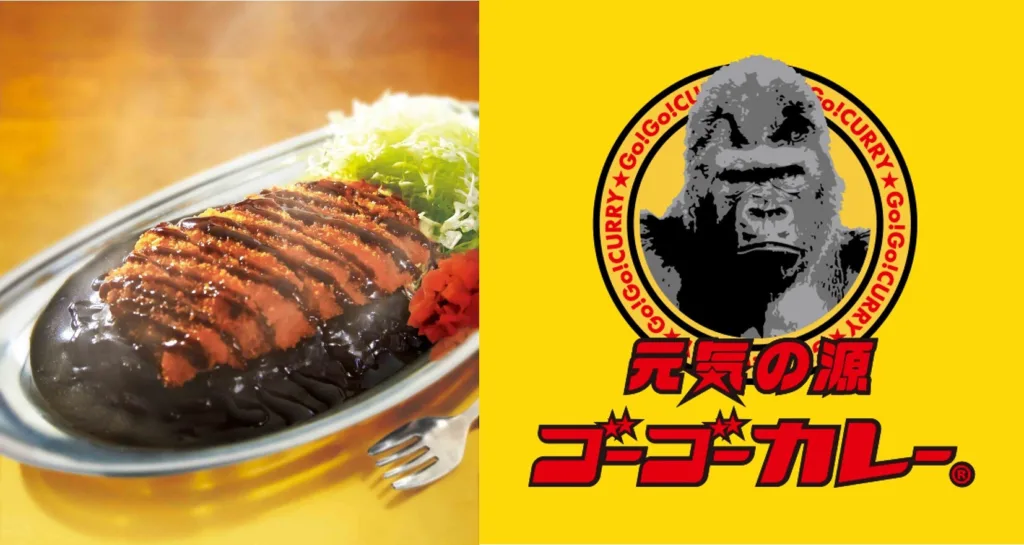
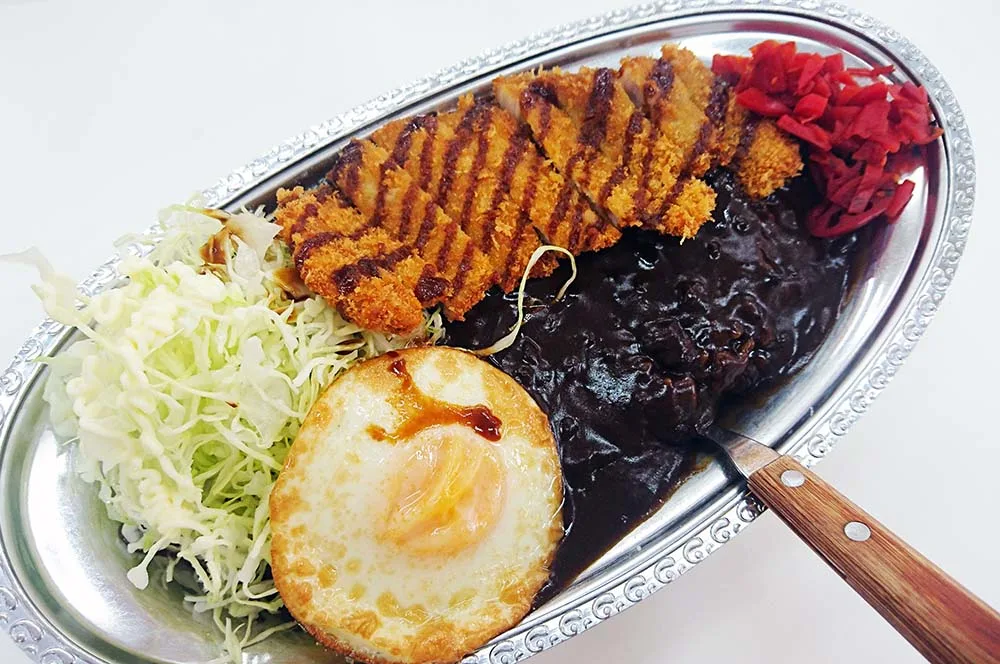
History and Concept
- Founding: Go! Go! Curry was founded by Hiromitsu Nishikawa, who opened the first restaurant in Kanazawa, Ishikawa Prefecture, Japan, in 2003. The restaurant’s name and concept are inspired by Nishikawa’s admiration for baseball player Hideki Matsui, who is known by the nickname “Godzilla” and wore the number 55.
- Name Significance: The “Go! Go!” in the name is a play on the number 55 (pronounced as “go-go” in Japanese), symbolizing the founder’s enthusiasm and the restaurant’s energetic atmosphere.
Kanazawa-Style Curry
- Characteristics: Kanazawa-style curry is distinct from other Japanese curries due to its thick, dark, and rich gravy. It has a slightly sweet taste with a complex blend of spices, making it both flavorful and comforting.
- Serving Style: The curry is served on a stainless steel plate, which is a traditional presentation in Kanazawa. The dish typically includes a generous serving of rice, a ladleful of curry, and various toppings.
Menu Highlights
- Katsu Curry: One of the most popular dishes is the Katsu Curry, featuring a breaded and deep-fried pork cutlet served on top of the curry and rice. Chicken and shrimp katsu are also available.
- Toppings: Additional toppings include boiled eggs, shredded cabbage, sausages, and croquettes. The combination of these toppings with the curry creates a hearty and satisfying meal.
- Sizes: Go! Go! Curry offers different portion sizes to cater to varying appetites, including Economy, Healthy, Business, First Class, and Grand Slam sizes. The Grand Slam is a particularly large serving, ideal for those with a big appetite.
Special Features
- Gorilla Mascot: The restaurant’s mascot is a friendly gorilla, which is featured prominently in the branding and decor. The gorilla symbolizes strength and energy, aligning with the restaurant’s vibrant theme.
- Set Menus: Go! Go! Curry often offers set menus that include the main curry dish, a drink, and a side, providing good value for customers.
- Limited-Time Offers: The chain occasionally introduces limited-time offers and seasonal specials, keeping the menu fresh and exciting.
International Expansion
- Global Presence: Go! Go! Curry has expanded beyond Japan, with locations in the United States (notably in New York City), Thailand, and other countries. This international expansion has helped popularize Kanazawa-style curry worldwide.
- Adapting to Local Tastes: While maintaining its core menu, some international locations offer localized versions of their dishes to cater to local preferences.
Dining Experience
- Casual Atmosphere: The restaurants have a casual and welcoming atmosphere, making them a popular choice for quick and satisfying meals. The decor often includes baseball memorabilia, reflecting the founder’s love for the sport.
- Efficient Service: Go! Go! Curry is known for its efficient service, ensuring that customers receive their meals promptly, which is ideal for busy individuals looking for a quick lunch or dinner.
Overall, Go! Go! Curry offers a unique and flavorful dining experience that has garnered a loyal following both in Japan and internationally. The combination of rich curry, generous portions, and a lively atmosphere makes it a favorite among curry enthusiasts.
Official HP

Jimbocho in Tokyo is known as a fiercely competitive curry battleground, with many delicious curry restaurants.
Jimbochou Tokyo

Jimbocho: The Curry Town of Tokyo
Jimbocho in Tokyo is known as “Curry Town.” While it’s famous for its bookshops, it’s also a popular area for its numerous curry restaurants. Here are some details about Jimbocho’s curry culture:
Curry Culture in Jimbocho
- Variety of Curry Shops: Jimbocho boasts a wide range of curry restaurants offering different types of curry, including Indian curry, Japanese curry rice, and spice curry. Each restaurant has its own unique blend of spices and recipes, allowing you to enjoy a variety of curry flavors.
- Old and New Restaurants: The area features long-established curry restaurants that have been loved for years, as well as newly opened places. Each restaurant offers distinct and individual curry dishes, ensuring new discoveries with each visit.
Popular Curry Restaurants
Ethiopia
- Spice Levels: Customers can choose from a range of spice levels, from mild to extremely spicy, ensuring a customizable dining experience.
- Signature Dish: The keema curry, made with minced meat and a blend of spices, is a standout favorite.
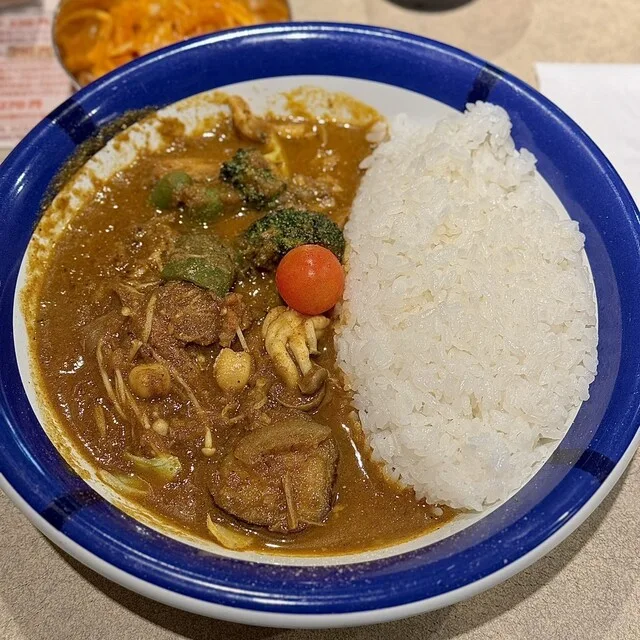

Bondy
- Rich and Creamy: Bondy’s curry is known for its rich, creamy texture, enhanced by the addition of cheese.
- Side Dishes: The restaurant serves boiled potatoes as a side dish, which complements the curry perfectly.
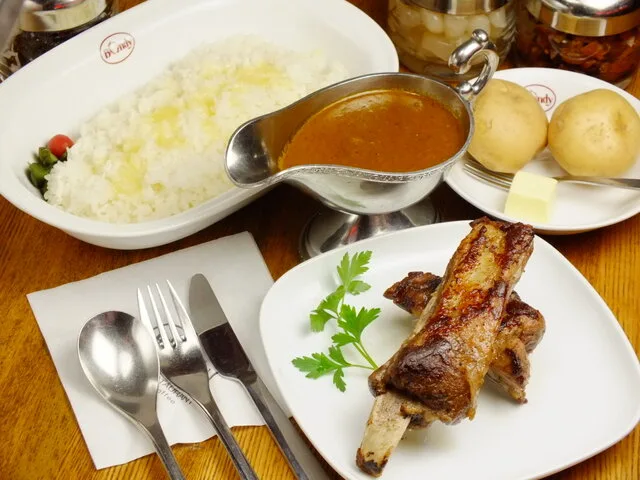
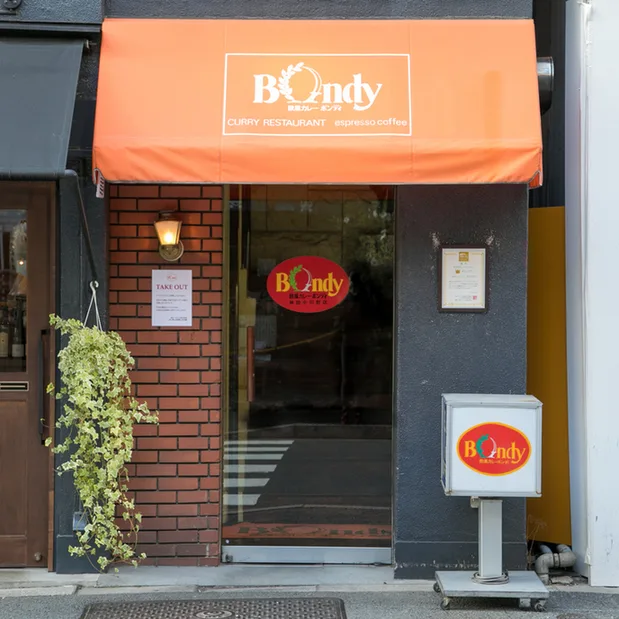
Kyoeido
- Indonesian Influence: Kyoeido offers a unique take on curry with its Indonesian-inspired flavors, setting it apart from other curry shops in the area.
- Historical Significance: With a history dating back several decades, Kyoeido has become a beloved institution in Jimbocho.
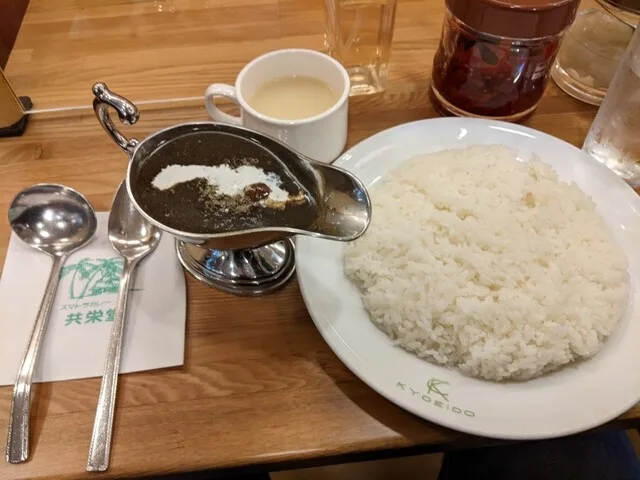
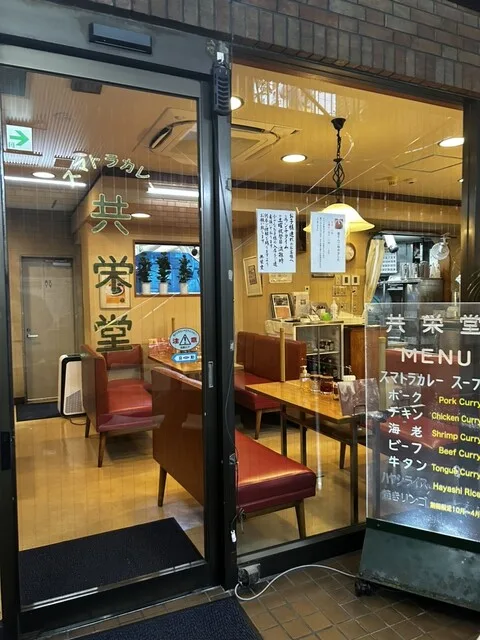
Exploring Jimbocho
Access
- Public Transportation: Jimbocho is easily accessible via the Tokyo Metro Hanzomon Line, Toei Mita Line, and Toei Shinjuku Line, making it convenient for both locals and tourists.
- Walking Tours: The compact nature of Jimbocho makes it ideal for walking tours, allowing visitors to easily hop from one curry restaurant to another.
Nearby Attractions
- Bookstores: Jimbocho is renowned for its numerous secondhand bookstores, offering a treasure trove of rare and vintage books. It’s a perfect place to explore before or after enjoying a curry meal.
- Cafes: The area is dotted with charming cafes, ideal for relaxing with a cup of coffee or tea and a good book.
- Cultural Sites: Nearby cultural attractions include the Meiji University Museum and the Kanda Myojin Shrine, adding a historical and cultural dimension to your visit.
Tips for Curry Lovers
- Lunchtime Rush: Many curry restaurants in Jimbocho get very busy during lunchtime, so arriving early or during off-peak hours can help you avoid long waits.
- Sampling Multiple Shops: Given the variety of curry styles available, consider trying smaller portions at multiple restaurants to experience the full range of flavors Jimbocho has to offer.
- Special Requests: Don’t hesitate to ask for spice adjustments or dietary accommodations, as many restaurants are willing to customize dishes to suit your preferences.
Jimbocho truly offers a rich and diverse curry experience, making it a must-visit destination for curry enthusiasts and food lovers alike.
